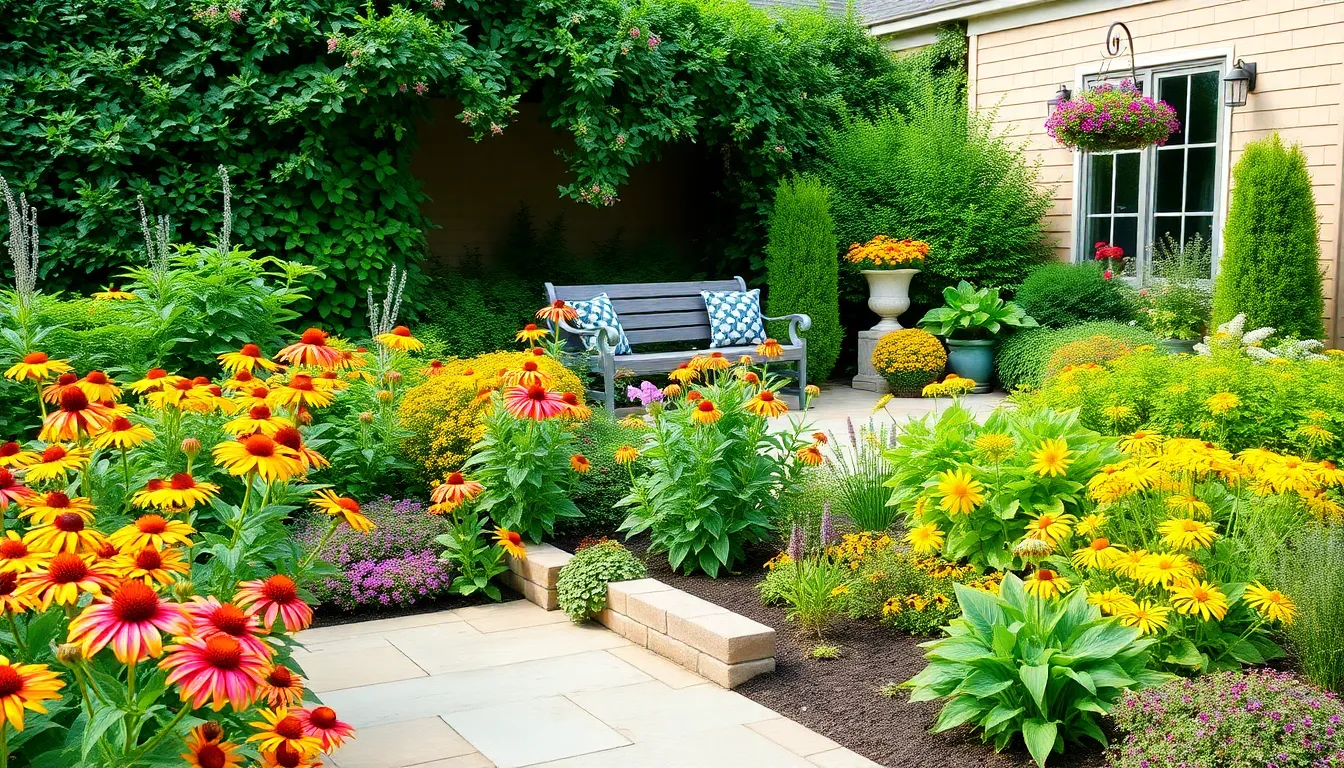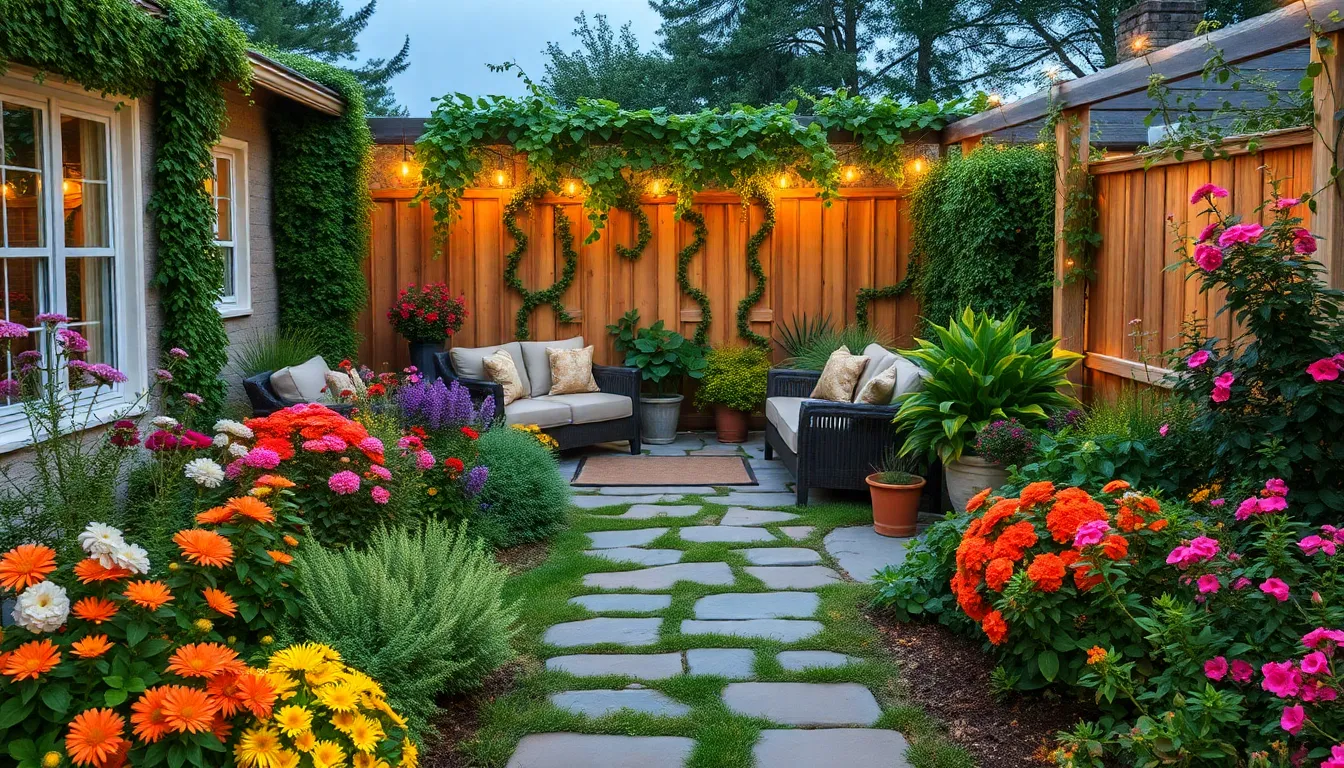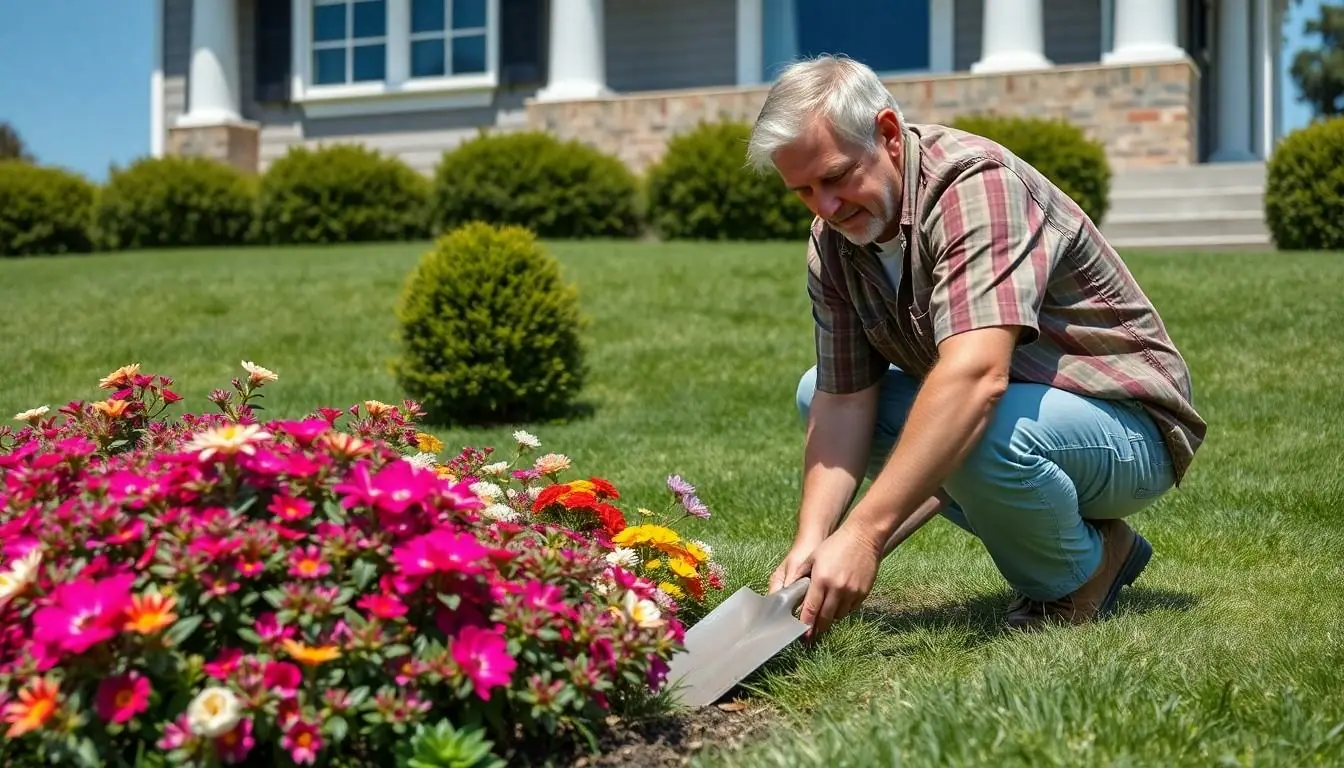Imagine stepping out onto your patio, only to be greeted by a barren wasteland of concrete and weeds. Not exactly the serene escape you envisioned, right? Landscaping around a patio isn’t just about aesthetics; it’s about transforming your outdoor space into a vibrant oasis where relaxation reigns supreme.
Table of Contents
ToggleImportance Of Landscaping Around Patio
Landscaping around a patio enhances both functionality and appearance. A well-designed landscape invites relaxation and socialization while providing a serene escape. Plants serve multiple purposes; they add color, create privacy, and reduce noise. An appealing outdoor space encourages more frequent use of the patio area.
A thoughtfully curated landscape establishes a seamless flow between the patio and surrounding environment. Natural elements soften hard surfaces, resulting in a more inviting atmosphere. Incorporating diverse plants, flowers, and shrubs adds layers of texture and interest, further enhancing the visual appeal.
Landscaping also plays a functional role in maintaining the environment. Native plants require less water and upkeep, promoting ecological sustainability. Properly selected vegetation can offer shelter for local wildlife, creating a thriving ecosystem.
Additionally, landscaping improves property value. An attractive outdoor area can significantly boost a home’s market appeal. Potential buyers often prioritize outdoor living spaces, especially if they are enhanced by appropriate landscaping.
Choosing the right materials and designs integrates the patio with its surroundings. Elements such as stone pathways, decorative boulders, and outdoor lighting enhance usability and aesthetic value. Effective landscaping extends the living space beyond four walls, creating an inviting environment for gatherings and relaxation.
Investing in landscaping around a patio results in a space that not only looks good but also functions effectively. A well-planned area encourages outdoor activities, making it an essential component of a home. By carefully selecting and positioning plants, one can create a harmonious balance that elevates the entire outdoor experience.
Choosing The Right Plants

Selecting suitable plants enhances both the beauty and functionality of a patio landscape. Thoughtfully chosen plants contribute to a tranquil and inviting outdoor space.
Native Plants
Native plants thrive in local climates, requiring less water and maintenance. They support local wildlife by providing essential habitats and food sources. Additionally, these plants often adapt well to soil types found in the region. They blend seamlessly with existing landscapes, creating a cohesive look that becomes more vibrant over time. For instance, incorporating species like coneflowers or black-eyed Susans can add a splash of color while attracting pollinators.
Seasonal Color
Seasonal color adds visual interest throughout the year. Choosing plants that bloom at different times ensures that the landscape remains lively in every season. Examples include spring-blooming tulips and summer-blooming daylilies. Fall offers unique opportunities with plants like chrysanthemums, and winter can feature evergreens for consistent greenery. A well-planned selection not only beautifies the patio but also creates a dynamic outdoor experience. Engaging the senses with seasonal changes encourages more outdoor activities and enjoyment.
Hardscaping Elements
Hardscaping elements play a crucial role in enhancing the functionality and aesthetic appeal of a patio. These elements provide structure and definition, creating a cohesive outdoor environment.
Patios and Pathways
Patios define outdoor living spaces, offering a solid foundation for furniture and activities. Pathways guide guests smoothly from one area to another, ensuring safe navigation through landscapes. Choosing materials like pavers, stones, or bricks allows for a customizable look that matches personal style. Incorporating curves and natural lines creates a welcoming atmosphere. Adding lighting along pathways enhances visibility during evening gatherings, promoting safety and enjoyment. Functional hardscaping not only encourages use but also ties together the various landscape components, forming an inviting outdoor experience.
Fencing and Walls
Fencing and walls contribute privacy while enhancing the overall landscape design. Selecting natural materials such as wood, stone, or wrought iron blends seamlessly into the surrounding environment. Decorative walls can serve as backdrops for flower beds or art installations, adding visual interest. Lattice panels or low walls provide separation without obstructing views. Integrating these structures with climbing plants softens their appearance, fostering harmony within the landscape. A well-placed fence or wall also establishes boundaries that enhance the feeling of security, making the patio a more enjoyable retreat.
Designing A Functional Space
Designing a functional space around a patio involves careful planning and consideration of various elements. This design promotes both usability and visual appeal.
Creating Zones
Creating zones within the patio area fosters distinct spaces for relaxation, dining, and recreation. Use planters to mark boundaries, establishing separate areas while maintaining a cohesive look. Position furniture to facilitate conversation, ensuring adequate space for movement. Add rugs to designate seating areas, enhancing comfort. Dividing the space not only maximizes utility but also encourages a welcoming atmosphere for guests.
Outdoor Furniture and Decor
Outdoor furniture and decor significantly influence the functionality and style of the patio. Choose weather-resistant materials to ensure durability and comfort during varying climates. Consider a mix of seating options, such as lounge chairs and dining sets, supporting both relaxation and social gatherings. Incorporate decorative elements like cushions and throws to add pops of color and texture. Utilize lighting to create ambiance, enhancing the patio experience during evening gatherings.
Maintenance Tips
Regular maintenance ensures that landscaping around a patio remains vibrant. Start with watering plants according to their specific needs, adjusting based on local weather conditions. Trimming overgrown plants prevents them from overshadowing the patio and keeps pathways clear.
Mulching plays a vital role in moisture retention and weed prevention. Apply a layer of organic mulch, such as wood chips or bark, around plants for added benefits. Monitor soil health and amend it as needed to support healthy plant growth.
Fertilization should align with the types of plants chosen. Use slow-release fertilizers for sustained nourishment. Pest control measures help protect plants from common invaders, using environmentally friendly options to minimize impact on the surrounding ecosystem.
Seasonal clean-ups maintain aesthetic appeal. Remove debris like fallen leaves and twigs that accumulate around the patio. Inspect hardscaping elements regularly for damage, repairing or replacing stones and pavers as necessary.
Adjusting irrigation systems proves essential to ensure efficiency. Check for leaks or blockages and adjust timers accordingly to avoid overwatering. Consider installing drip irrigation systems for precise watering, which conserves water and promotes healthy plant growth.
Evaluate lighting components to ensure safety and ambiance during evening gatherings. Clean fixtures to keep them functional and visually appealing. Replacing burned-out bulbs promptly ensures continuous enjoyment of the outdoor space.
Incorporating native plants reduces maintenance efforts. They require less water and are adapted to local conditions. This choice supports biodiversity and reduces reliance on chemical fertilizers and pesticides. Prioritize native flora to create a sustainable, low-maintenance landscape surrounding the patio.
Landscaping around a patio transforms an ordinary outdoor space into a vibrant oasis. Thoughtful design not only enhances aesthetics but also boosts functionality and encourages relaxation. By incorporating native plants and hardscaping elements, homeowners can create a sustainable environment that supports local wildlife while minimizing maintenance.
A well-planned landscape fosters a seamless flow between the patio and its surroundings, inviting social gatherings and outdoor enjoyment. With the right materials and strategic design, patios become inviting retreats that add value to a property. Regular maintenance ensures these spaces remain beautiful and functional year-round, making them perfect for any occasion. Investing in landscaping is an investment in lifestyle, creating a welcoming atmosphere that enhances every outdoor experience.







